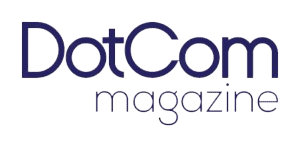Entrepreneurs… Bend the rules!#entrepreneurship #businessmindset #entrepreneur

They really are no new big ideas…#Entrepreneur #entrepreneurship #entrepreneurlife

Entrepreneurship in under 30 seconds… Thank you for the email! That was challenging but here`s your answer and I hope you like it!#entrepreneurship #entrepreneurlife #entrepreneur

ChatGPT and Claude jump the damn shark… They`re on TV now…#entrepreneur #entreprenuerlife #entrepreneurship

What should you do when your top producing salesman is wrecking havoc on your entire salesforce?#entrepreneurship #entrepreneurlife #entrepreneur

Are we all screwed with AI? If you listen to the long format interviews of CEOs running AI, they sound confused, and uncertain. #entrepreneur #entrepreneurship #entrepreneurlife

What it will AI punish you? It will if you`re unprepared #entrepreneur #entrepreneurship #entrepreneurmindset

Will you lose your job to AI?#entrepreneurship #entrepreneur #entreprenuerlife

Artificial Intelligence (AI) in the business team collaboration, AI in the business team collaboration, and AI in the business team collaboration are transforming how organizations communicate, innovate, and deliver results. From streamlining communication to automating project management tasks, AI is becoming indispensable for enhancing team productivity and synergy. As businesses increasingly rely on virtual environments, understanding how AI in the business team collaboration affects workflow dynamics, team cohesion, and goal alignment is essential. This article explores the top ten transformative insights that will reshape how you view AI’s role in collaborative business settings, ensuring your company remains agile and competitive in an AI-driven future.
1. Enhanced Real-Time Communication
AI-driven platforms like Slack, Microsoft Teams, and Zoom are evolving beyond basic communication tools. Natural Language Processing (NLP) enables real-time translation, sentiment analysis, and even meeting summarization. For multinational teams, this ensures language is no longer a barrier. AI bots can also filter out noise from conversations, detect urgency, and prioritize critical messages. This transformation is particularly useful for large organizations juggling multiple time zones and diverse work cultures, ultimately fostering better understanding and faster decision-making.
2. Smarter Task Management and Automation
Gone are the days of manually updating spreadsheets or assigning repetitive tasks. AI in tools like Trello, Asana, and ClickUp now uses machine learning to predict deadlines, assign tasks based on availability and expertise, and even suggest improvements in task delegation. These AI algorithms reduce human error, improve accountability, and boost productivity. By learning from past behavior, the AI becomes more refined over time, allowing for even greater efficiency in managing complex projects.
3. Intelligent Meeting Scheduling and Attendance Optimization
AI assistants like x.ai or Google Calendar’s smart scheduling can analyze all team members’ calendars and suggest the best time to meet without endless email threads. More advanced systems also consider individual preferences and productivity hours. Some tools even recommend whether a meeting is necessary at all, based on agenda items and team workload. Moreover, AI-driven attendance tracking identifies key contributors and flags when essential participants are missing, helping teams reallocate discussions accordingly.
4. AI-Generated Actionable Insights from Collaboration
AI isn’t just passively collecting data; it’s analyzing communication threads, task statuses, and project milestones to offer valuable insights. For example, AI can identify when a team is veering off course, detect productivity bottlenecks, and recommend course corrections. Advanced dashboards present this information in an easily digestible visual format, which managers can use to coach teams more effectively. This proactive intelligence can be the difference between successful project completion and failure.
5. Elevating Team Morale through Predictive Analytics
AI systems now use emotional recognition tools, sentiment analysis, and behavioral trends to predict team burnout or disengagement. Platforms like Microsoft Viva and Culture Amp integrate AI to monitor employee sentiment and provide HR with data to intervene early. For example, if team members are showing signs of disengagement in communications or declining responsiveness, AI can flag these changes. Prompt interventions can include lightening workloads, offering breaks, or conducting one-on-one check-ins—strategies proven to improve morale and retention.
6. Facilitating Knowledge Sharing and Onboarding
New team members often struggle to navigate institutional knowledge. AI can streamline onboarding by directing them to relevant documents, experts, and training materials based on their role. Tools like Guru and Notion now include AI-powered search and recommendation engines that tailor content suggestions to the user’s current project or query. These smart systems dramatically reduce the learning curve and ensure that knowledge is accessible, up-to-date, and context-specific.
7. Dynamic Resource Allocation
One of the most impactful uses of AI in business team collaboration is intelligent resource management. AI tools assess project demands, individual workloads, and skill sets in real-time, offering optimized suggestions for team restructuring or reallocation. Instead of fixed roles, teams can become fluid, adapting to real-time project needs. This flexibility makes collaboration more dynamic and ensures the right person is always assigned the right task at the right time.
8. AI-Powered Conflict Resolution
Conflicts are inevitable in any team, but AI can help detect and defuse them early. Sentiment and tone analysis in team chats and emails can reveal underlying tension. When flagged, AI tools can offer de-escalation strategies or alert managers to intervene. Some platforms even offer tailored communication training for team members who consistently show aggressive or passive-aggressive communication patterns. This preemptive approach not only improves interpersonal dynamics but also prevents productivity loss due to unresolved conflicts.
9. Enhanced Cybersecurity for Collaborative Platforms
With remote work and digital collaboration on the rise, cybersecurity is critical. AI now plays a vital role in detecting phishing attacks, unauthorized access, or unusual behavior in collaborative tools. It can flag if a team member suddenly downloads excessive files or accesses data outside normal hours. Moreover, AI can suggest stronger password practices and automatically enforce security protocols based on user behavior and threat levels. Trust and data safety in collaborative platforms are essential for long-term success.
10. Personalization of Collaborative Workflows
AI adapts to individual work habits and tailors the user interface accordingly. For example, it can reorganize dashboards, prioritize to-do lists, or rearrange calendar invites based on a user’s preferred workflow and productivity rhythm. This personalization boosts engagement, reduces overwhelm, and aligns tasks with individual cognitive styles. Additionally, AI can nudge users to take breaks or log off, promoting healthy work-life boundaries that ultimately benefit the entire team.
The Future of AI in Business Team Collaboration
As AI continues to evolve, its integration into team collaboration will go beyond support and automation—it will become predictive, adaptive, and even strategic. Future AI systems might anticipate project requirements weeks in advance, detect when interdepartmental collaboration is needed, or even suggest entirely new workflows for innovation. Companies that leverage these capabilities early will not only outpace competitors but also foster a culture of continuous learning, empathy, and agility.
Conclusion
Understanding AI in the business team collaboration is no longer optional—it is essential for modern business success. From real-time communication enhancements to predictive morale monitoring and personalized workflows, AI’s influence is broad and deeply transformative. The ten points discussed above illuminate how AI in the business team collaboration is reshaping how people work together, drive results, and build strong, resilient teams. Embracing these technologies now ensures your organization stays competitive, innovative, and future-ready in the age of intelligent collaboration.









